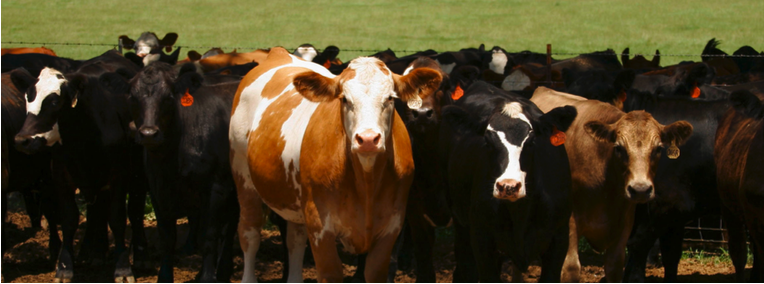Beef

Despite all the advances in preventative health management, stocker calves still get sick sometimes. Newly arrived stocker calves are particularly susceptible to respiratory disease. However, quickly identifying sick calves and providing prompt treatment increases the likelihood of restoring calf health and protecting your investment. When treating stockers for any illness, always maintain records that identify the animal, treatment, and date to monitor treatment outcomes, and then observe all withdrawal times before sale. In addition, keep the following in mind when treating stocker calves:
Proper Dosing
Effective treatment of calves with respiratory disease depends, in part, on administering a proper dose of antibiotic based on an accurate body weight. Underdosing heavier-weight calves will reduce product efficacy resulting in increased re-treatments, chronically ill calves, and calf deaths. Overdosing lighter-weight calves can potentially result in toxicity and the need for extended withdrawal times before to sale, not to mention the unnecessary, additional expense of the extra antibiotic.
Using actual accurate body weight ensures that medication doses are correct. While a scale is no small investment, it is one that will pay for itself as a result of more effective treatments. Accurate dosing will produce healthier calves and will directly lower medicine costs by preventing overdosing. Newer generation, long-acting antibiotics typically cost between $2.50 and $5.00 per 100 pounds of calf treated and are very effective in treating sick calves. However, overdosing with additional amounts of drug is extremely expensive. In addition, weighing calves before routine practices such as deworming gives you a baseline for measuring product effectiveness. Injectable dewormers usually cost between $0.30 and $0.80 per milliliter (mL), so overdosing 500 calves with just one extra milliliter per animal can cost between $150.00 and $400.00 that could have been invested in a scale.
Treatment Intervals
Some older antibiotics for cattle were active only for about 24 hours, so frequent administration was sometimes critical to successful treatment with these short-acting antibiotics. However, many of today’s antibiotics work for much longer than 24 hours and, in some cases, may be active for up to 28 days. As a result, many antibiotics are now labeled for single-dose therapy. When using these long-acting antibiotics, it is important to observe proper post-treatment intervals before re-treating with the same product or a different product. Sometimes that is easier said than done as it is difficult not to become impatient when you don’t see a rapid improvement after treating sick cattle with an antibiotic. The temptation is then to re-treat the animals after just a of couple days with a different product, even though the original product is active for much longer and the calf just needs a little more time to heal. Premature re-treatment wastes medicine and causes undue stress that could actually hinder the animal’s recovery. It also puts considerably more than the recommended level of antibiotic in the animal’s system at one time. The best practice is to treat sick animals and then allow them to recover for the length of time the antibiotic is active.
Label Directions
Always follow product label directions when administering medications to cattle. While it is best to refer directly to a product label, hanging a sign near the working chute with current dosages, routes of administration, storage recommendations, and withdrawal times based on label directions for commonly used medications provides a reference in the event the product label is worn, smeared, or otherwise less than legible. Ideally, the sign should have dosages in an easy-to-use format such as mL per a predetermined amount of body weight (for example, 4.5 mL per 100 pounds of body weight). Nobody wants to be converting dosages from mg/kg or mg/pound to mL/body weight after the animal arrives in the chute. Most newer product labels have dosages based on mL per 100- or 110-pound body weight intervals, but if not, go ahead and make that calculation before going to the processing chute to treat calves.
Example calculation for converting dosages from mg/ pound to mL/100 pounds body weight:
Drug concentration: each mL contains 200 mg of drug
Drug treatment dosage: 9 mg of drug per pound of body weight
9 mg/pound × 100 pounds =
900 mg needed to treat 100 pounds
900 mg per 100 pounds ÷ 200 mg/mL = 4.5 mL/100 pounds
Conclusion
Before bringing stocker calves onto the farm, discuss disease prevention and treatment protocols with your veterinarian to maximize herd health. Your veterinarian plays an important role in preventing, diagnosing, and treating disease. Selecting the proper treatment depends on accurately diagnosing the problem, and your veterinarian can assist in that process. Work with your veterinarian to develop a herd health program designed to fit your specific needs.

